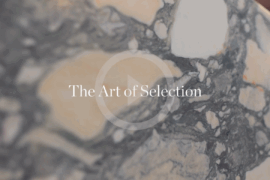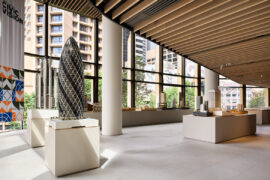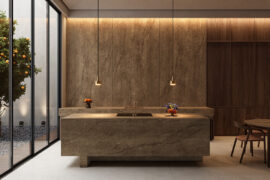Nestled within three painstakingly restored, 19th century shophouses along Beach Road, The Lo & Behold Group’s new office opens up to the community with a tea salon, reading room and retail zones.

indesignlive.sg
September 20th, 2016
The new premises of The Lo & Behold Group is a nod at Singapore’s creative scene. Besides housing the hospitality company’s 30 strong employees within the upper floor and mezzanine of the shophouses, three public spaces were carved out on the ground floor to host Looksee Looksee, an internally-run reading-room-cum-tea-salon; Scene Shang, a homegrown furniture and homeware label; and Supermama, a gallery store.
“With the new headquarters we hope to create an environment for our people to come together, be inspired, catalyse creativity and come up with ideas to drive the group to new heights,” says Wee Teng Wen, managing partner and co-founder of The Lo & Behold Group.
For its office and Looksee Looksee, the Group engaged the help of John Lim to design the interiors. Lim also worked alongside Sy Lyng of OWMF Architecture for the architectural components of the site – the pair first met as colleagues at The Cooper Union in New York City.
On The Lo & Behold Group’s office, Lim reveals, “It’s a welcoming change of scale and pace from the larger institutional and commercial projects that I worked on in New York and Beijing.” The designer worked at Buro Ole Scheeren previously.
The public is invited to relax, browse, read and enjoy tea at Looksee Looksee. Lim created an inviting and intimate environment by tastefully putting together a pastel colour scheme, furnishings that feature soft curves, and natural materials such as compressed marble, terrazzo, wood, rattan and leather.
Cast in concrete and studded with pebbles, the four-arch entrance to Looksee Looksee is a noteworthy showpiece that was created in memory of the arched front door of the Group’s very first office.
According to Lim, the biggest challenge was restoring the 1820s shophouses to suit today’s needs and the client’s desire for a refined rather than industrial aesthetic. Pipes, ducts, wirings and storage spaces were concealed within false walls that flank the sides of the shophouses.
Skylights were introduced on the non-street facing sides of the roof to invite more natural light into the space, resulting in an open, airy and homely office that resonates with the Group’s hospitality values.
Fluorescent battens and track lights have been encased in aluminium structures in dimensions that are consistent with the original ceiling rafters.
Within the office, interior walls were demolished to create an open space to host frequent collaboration and brainstorming sessions.
Retaining a sense of privacy, individual work desks were customised with a non-imposing three-sided ledge. “Even though it is an open office, that frame, however shallow, goes a long way in establishing a sense of personal space in a collective environment,” says Lim.
The office space was composed with a palette of greys and greens, featuring materials such as natural cork, hemp, cardboard-tone laminate and linoleum. Plants in each space create an atmosphere akin to a serene garden. Alternatively, employees can also head downstairs to work.
INDESIGN is on instagram
Follow @indesignlive
A searchable and comprehensive guide for specifying leading products and their suppliers
Keep up to date with the latest and greatest from our industry BFF's!

CDK Stone’s Natasha Stengos takes us through its Alexandria Selection Centre, where stone choice becomes a sensory experience – from curated spaces, crafted details and a colour-organised selection floor.

For Aidan Mawhinney, the secret ingredient to Living Edge’s success “comes down to people, product and place.” As the brand celebrates a significant 25-year milestone, it’s that commitment to authentic, sustainable design – and the people behind it all – that continues to anchor its legacy.
The internet never sleeps! Here's the stuff you might have missed

Civic Vision, a major exhibition showcasing the global work of Foster + Partners, has officially opened in Sydney.

Cosentino introduces Éclos®, a new mineral surface brand featuring zero crystalline silica, high recycled content and Inlayr® technology that brings 3D layered realism to design.